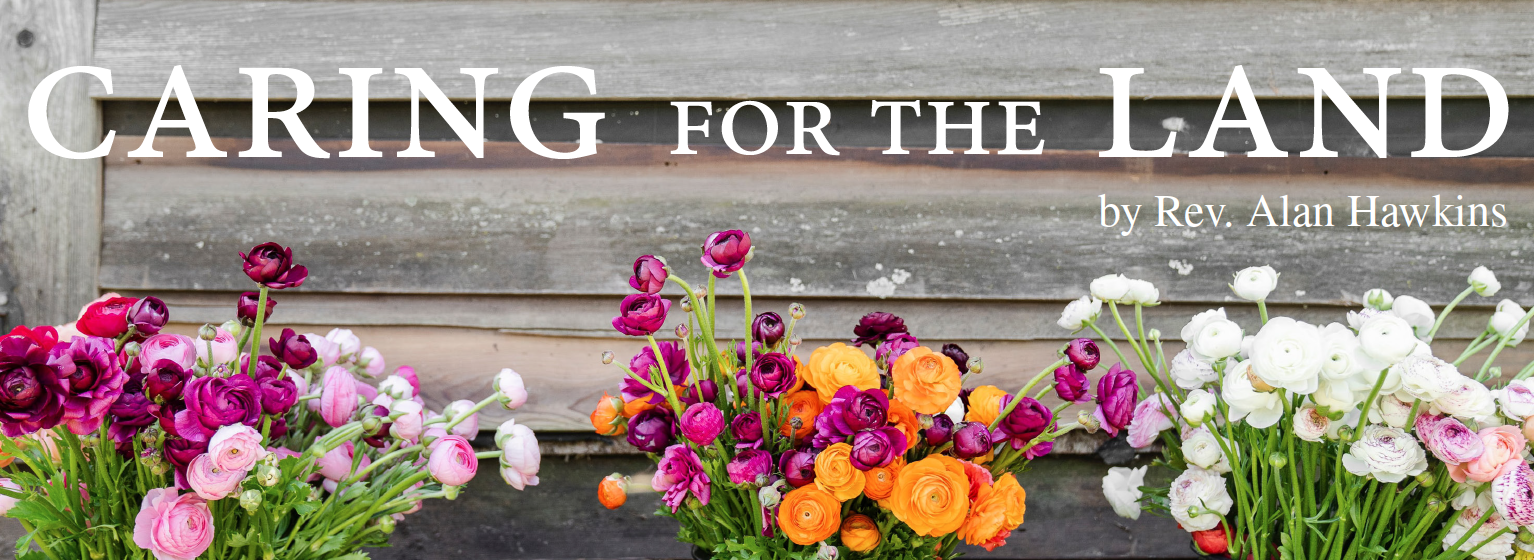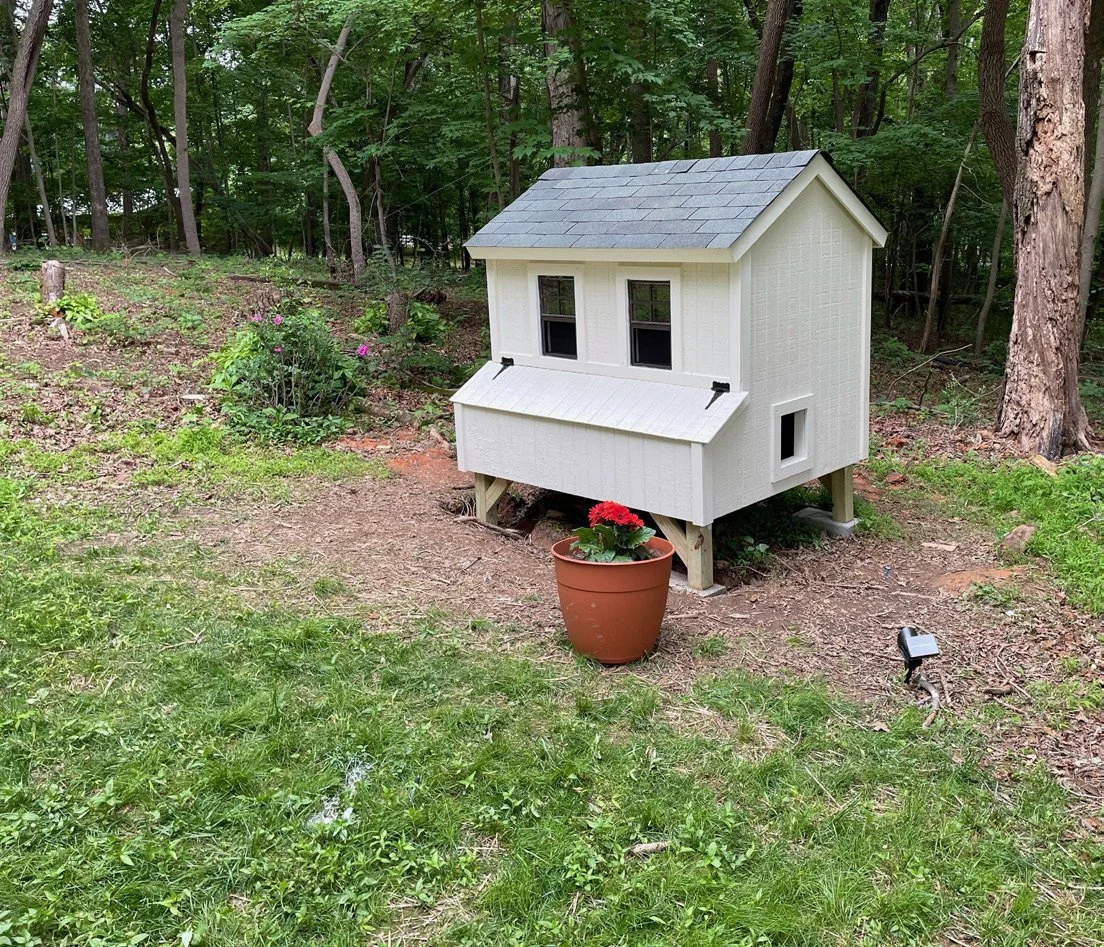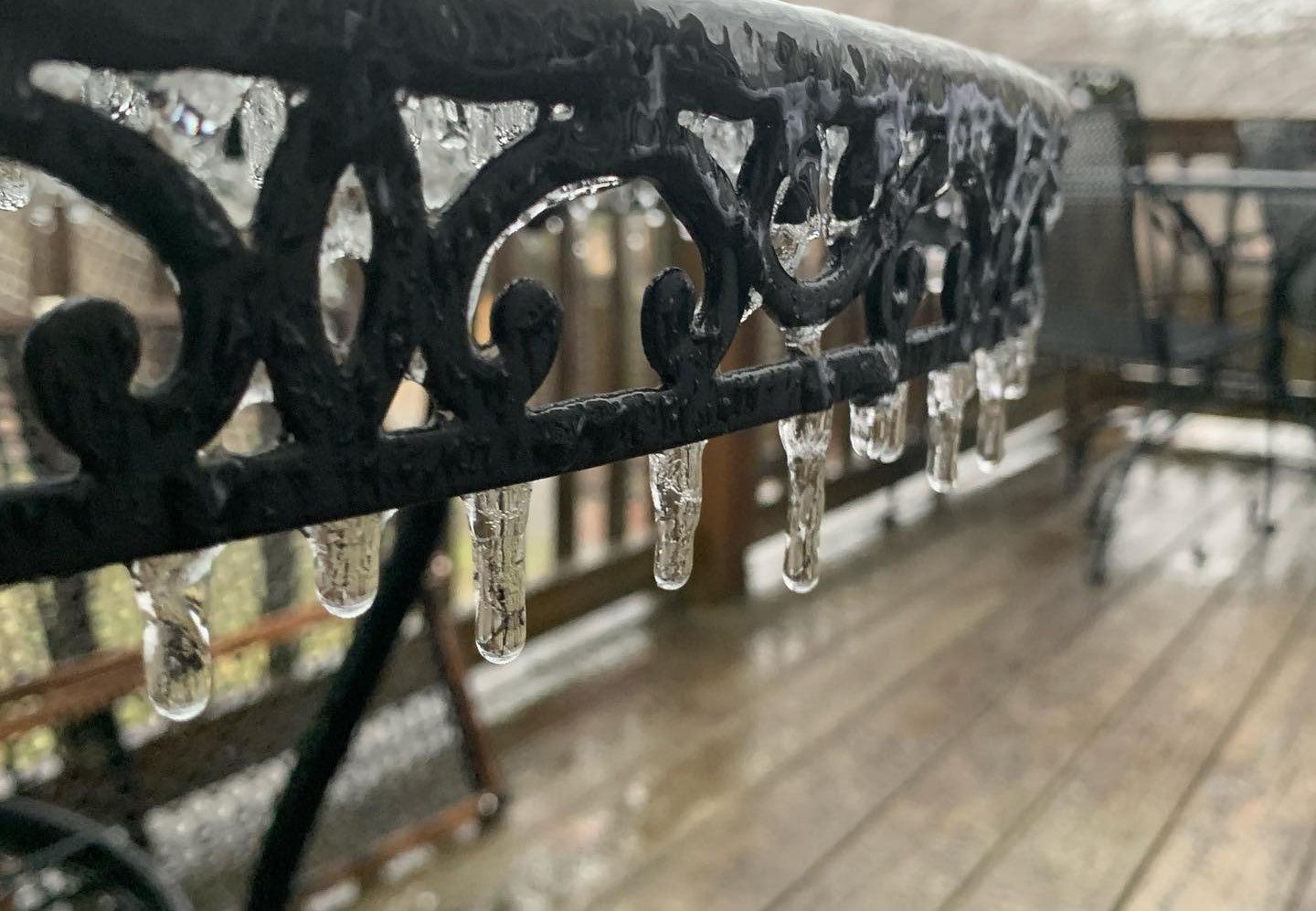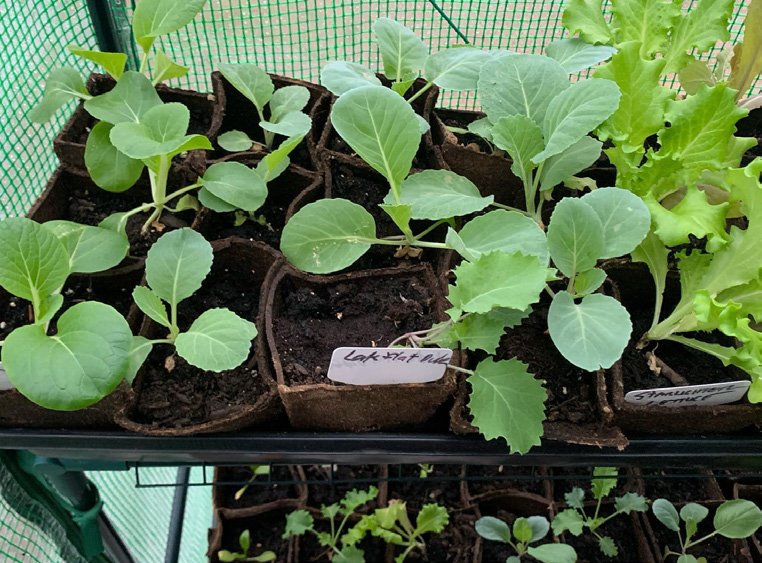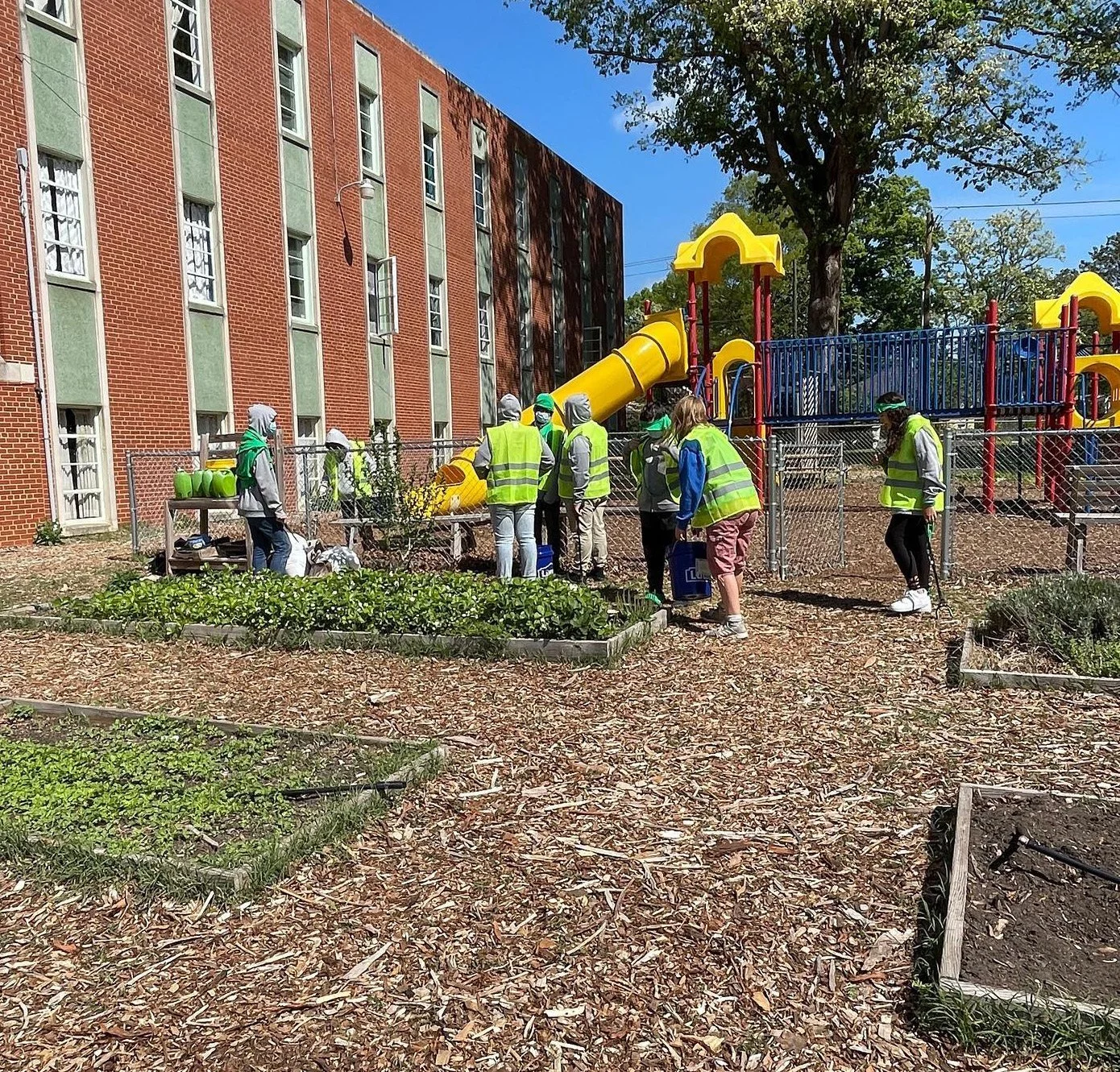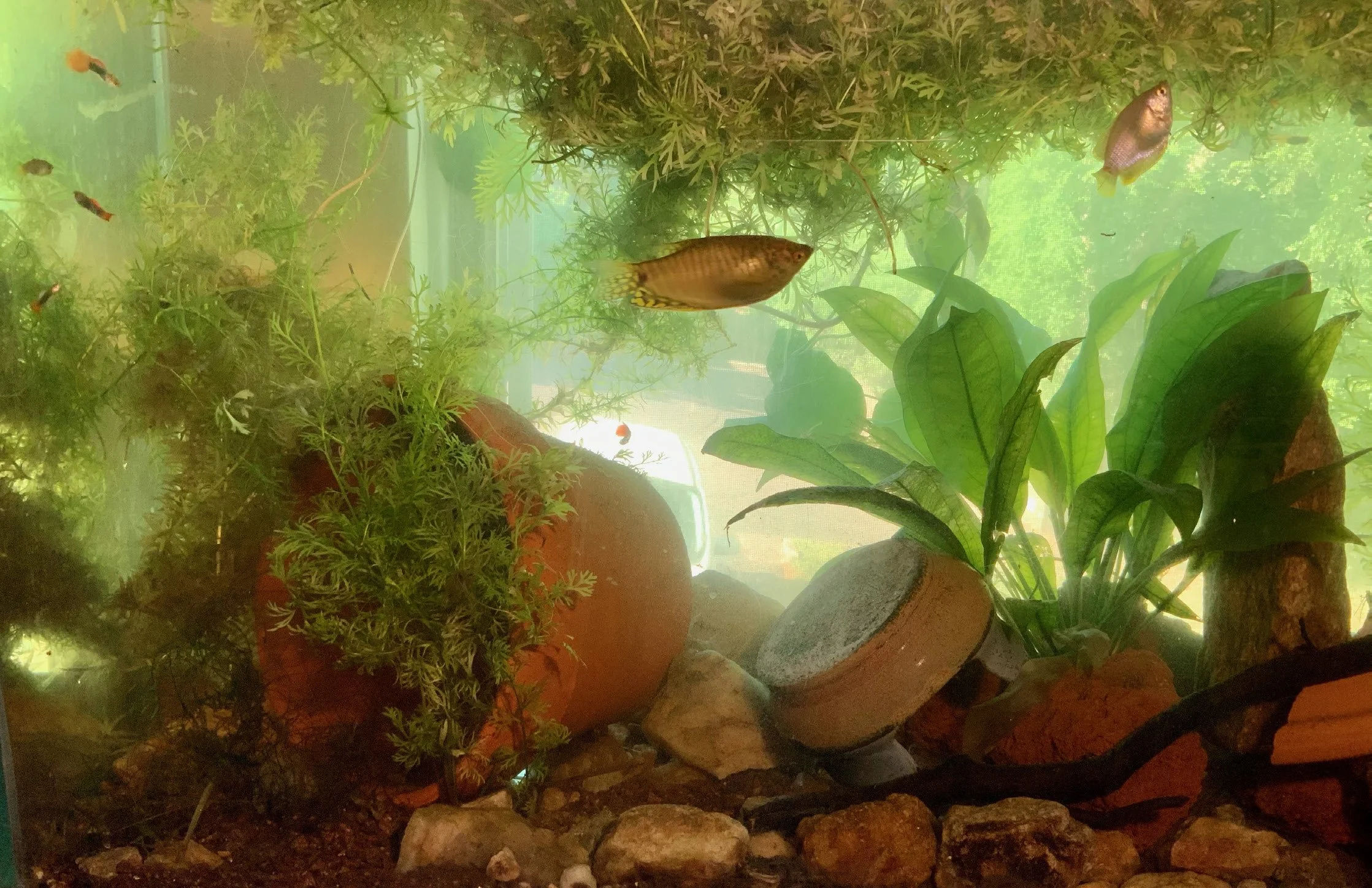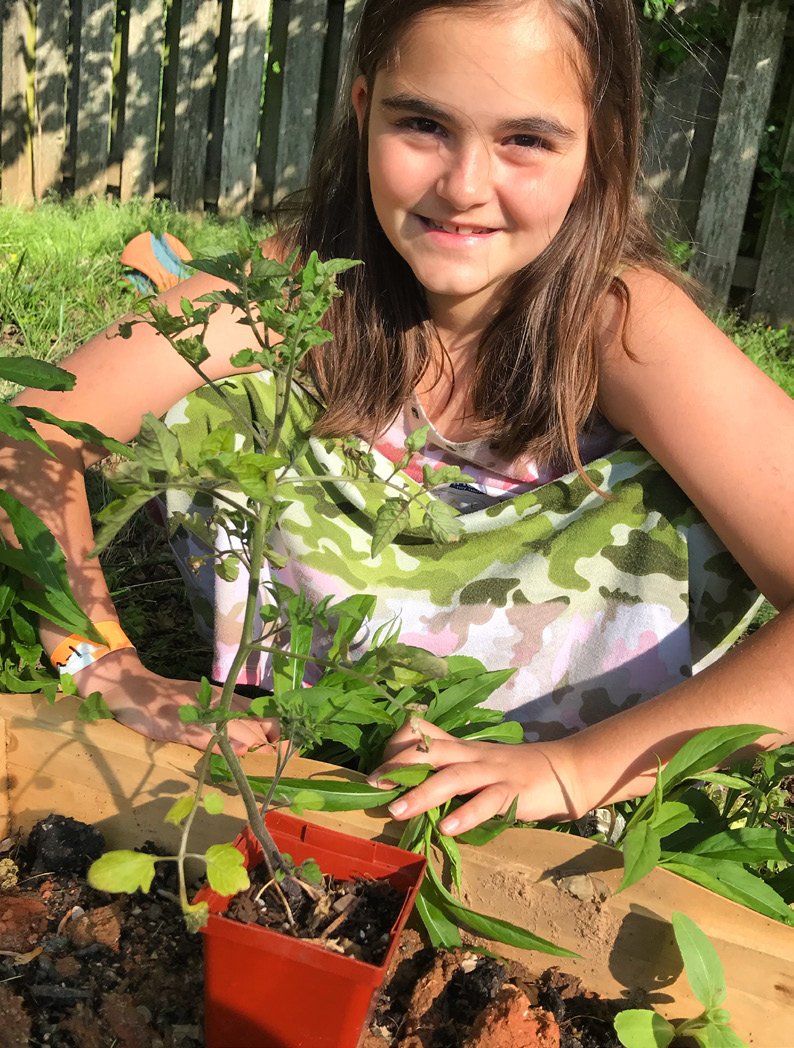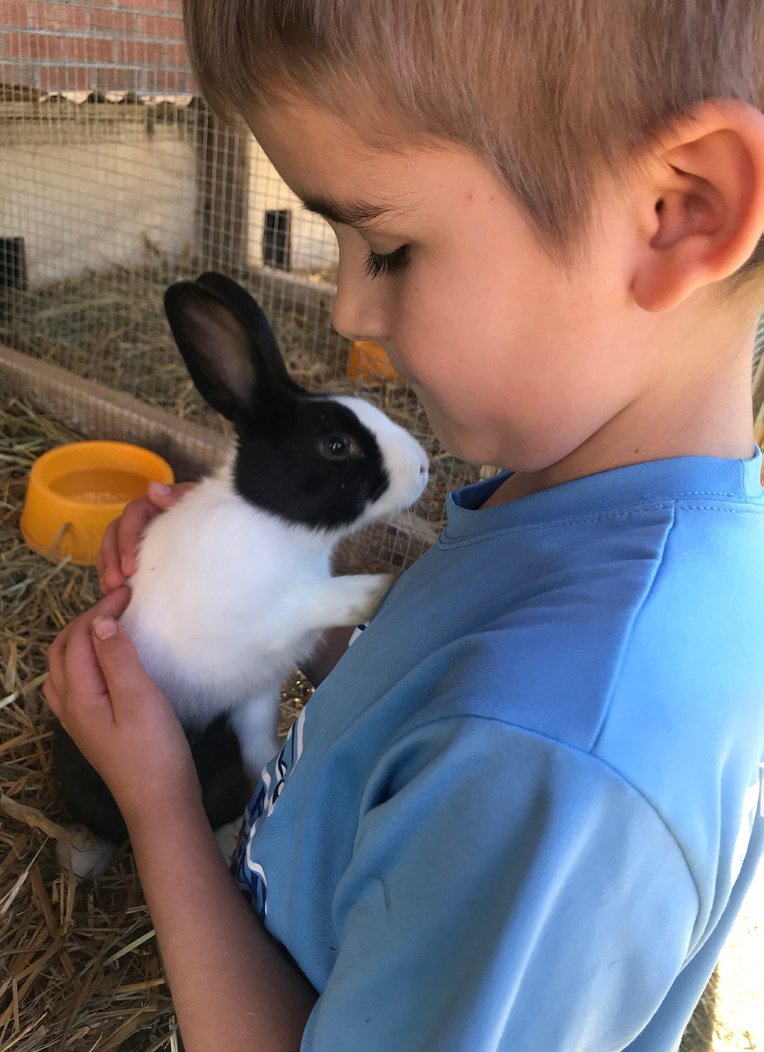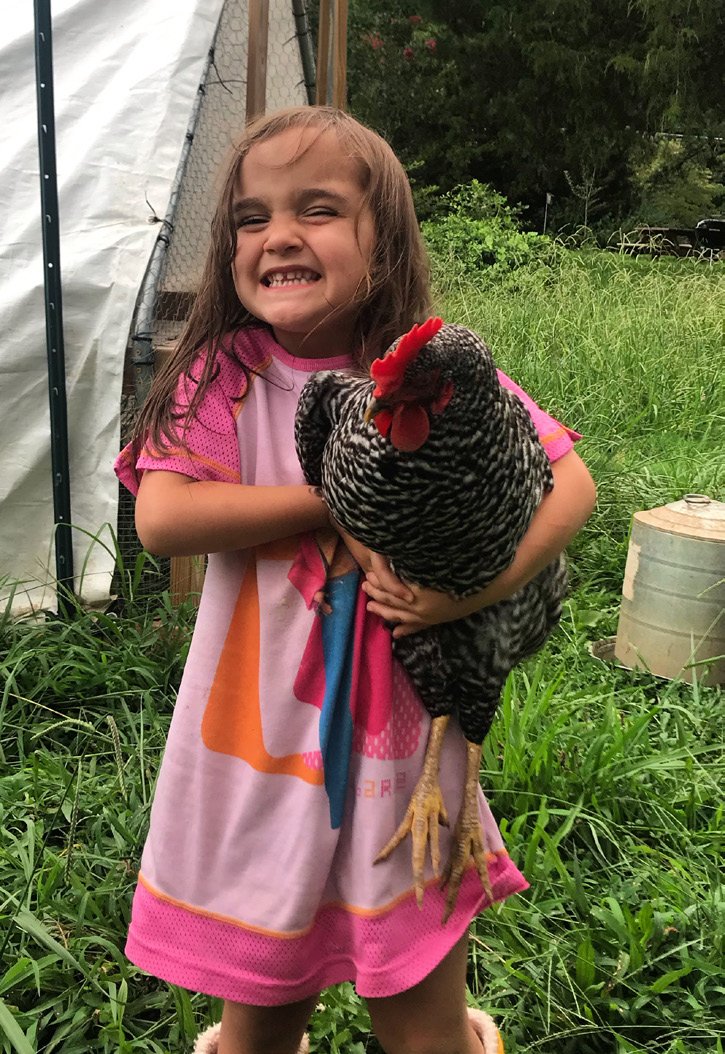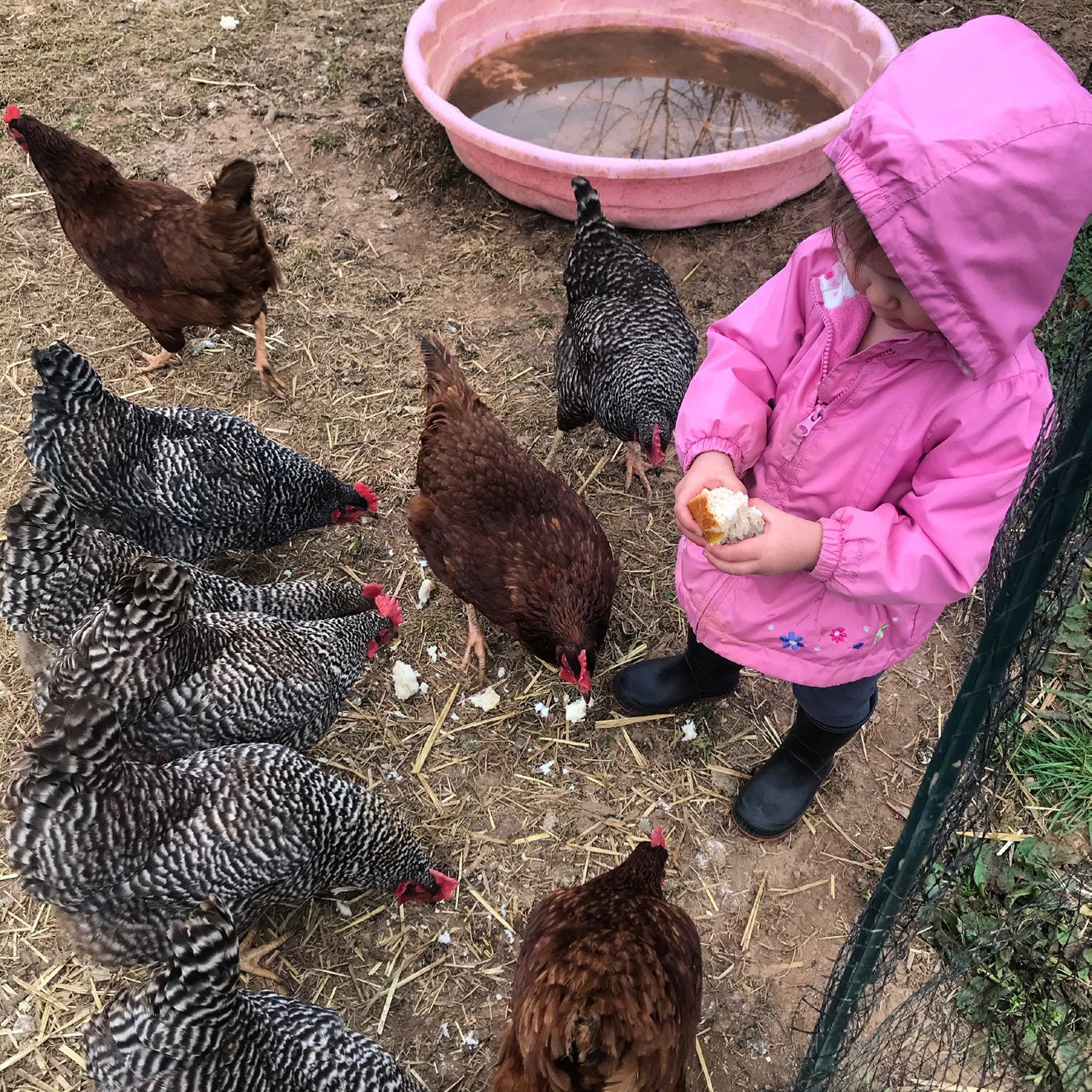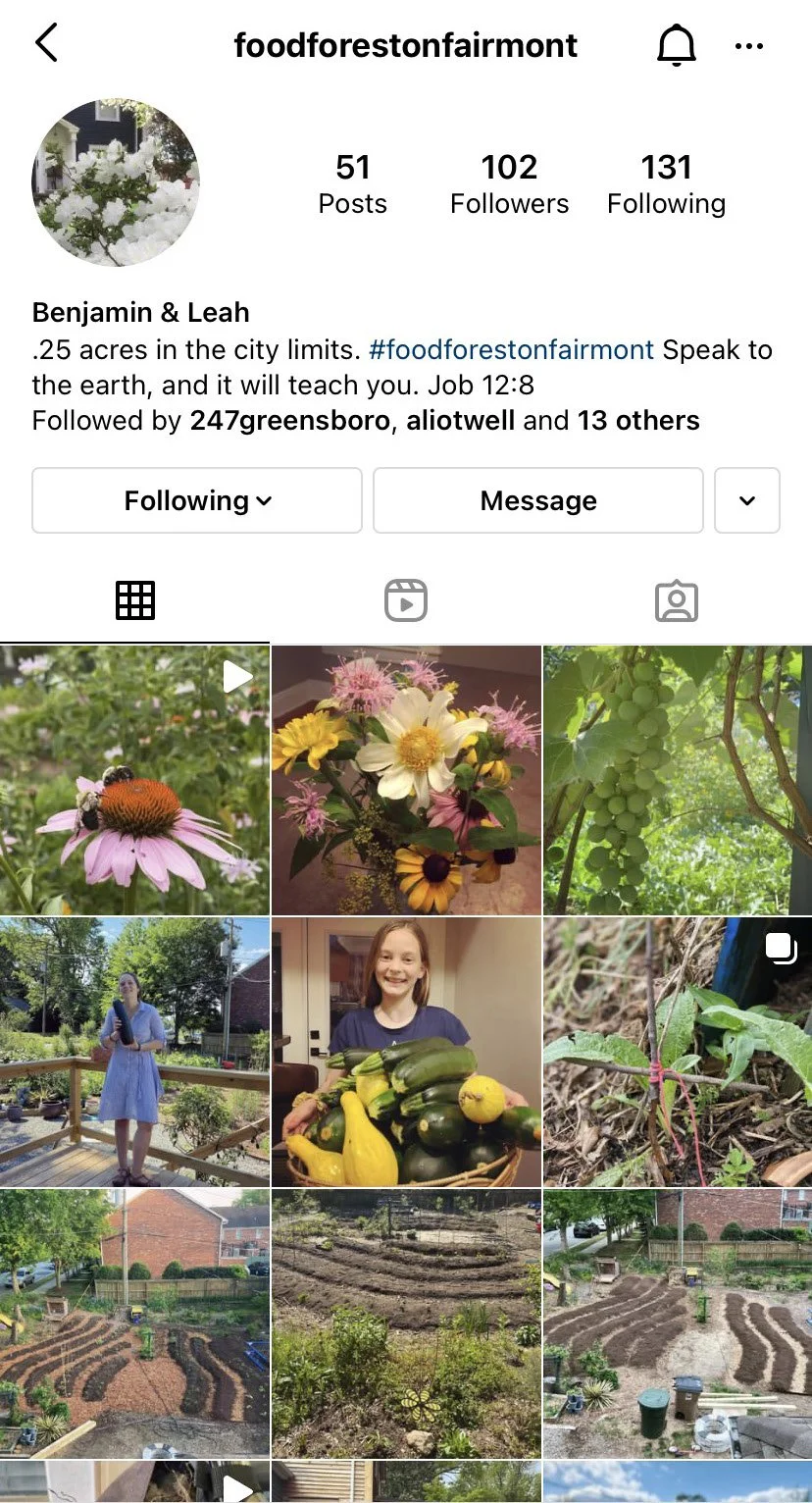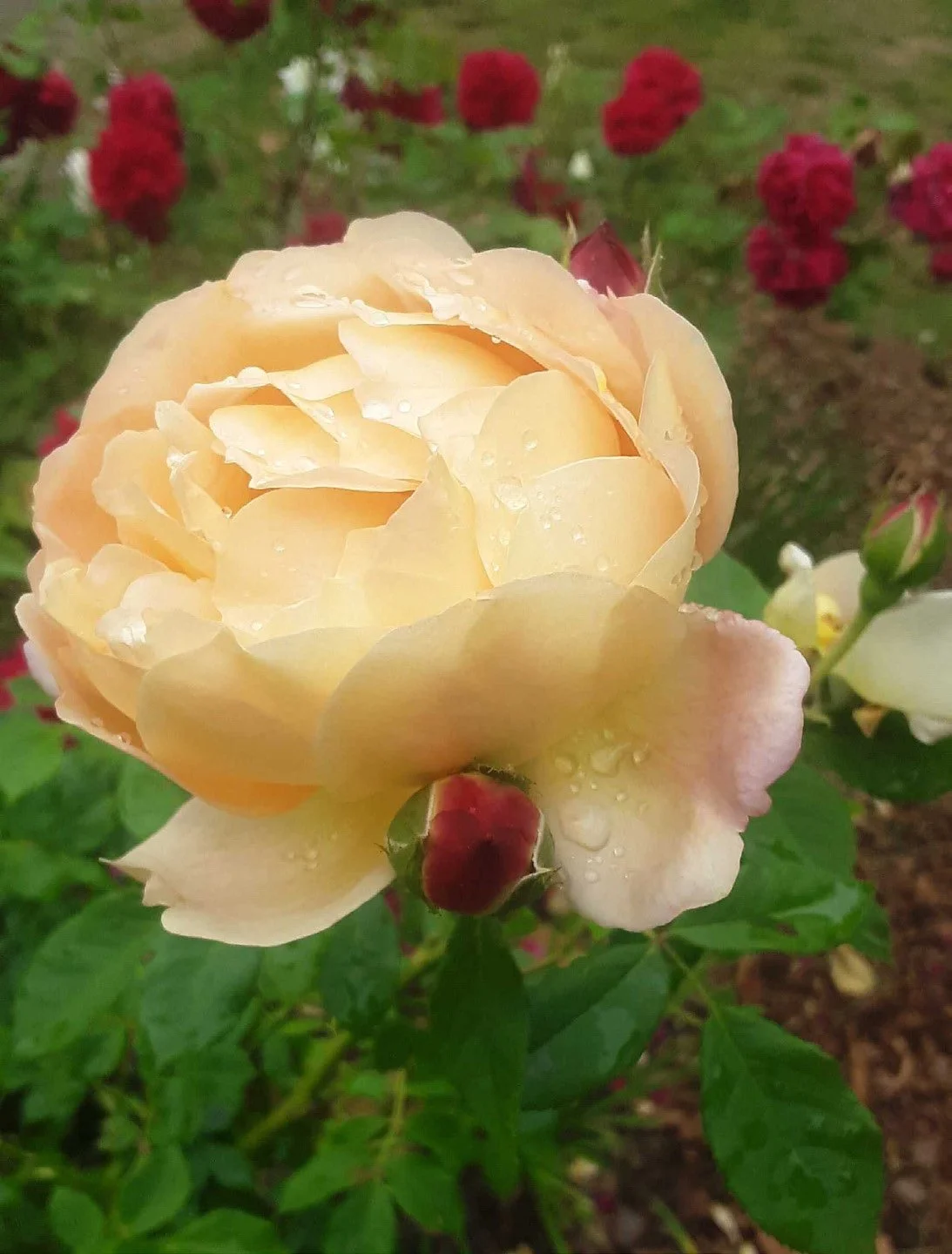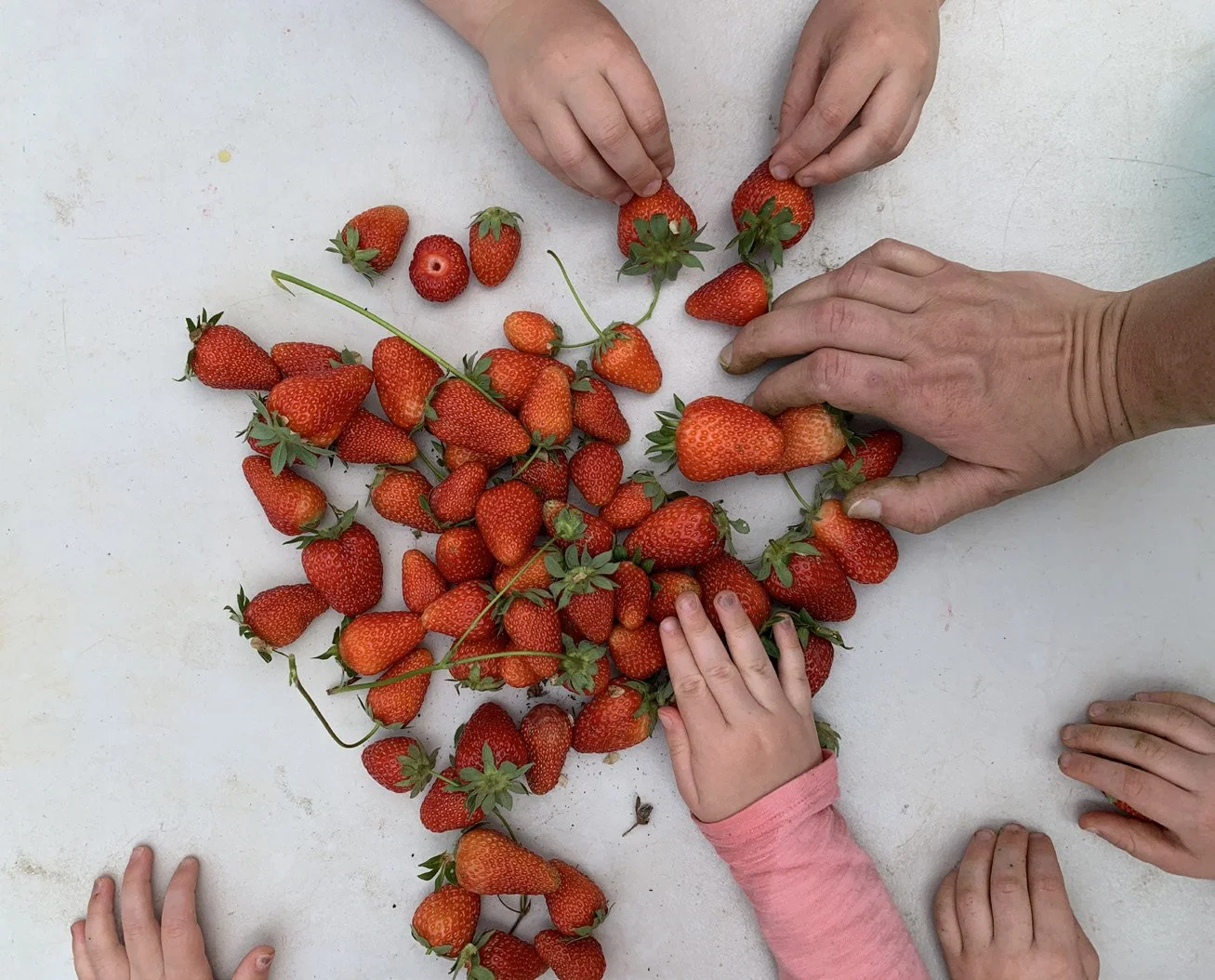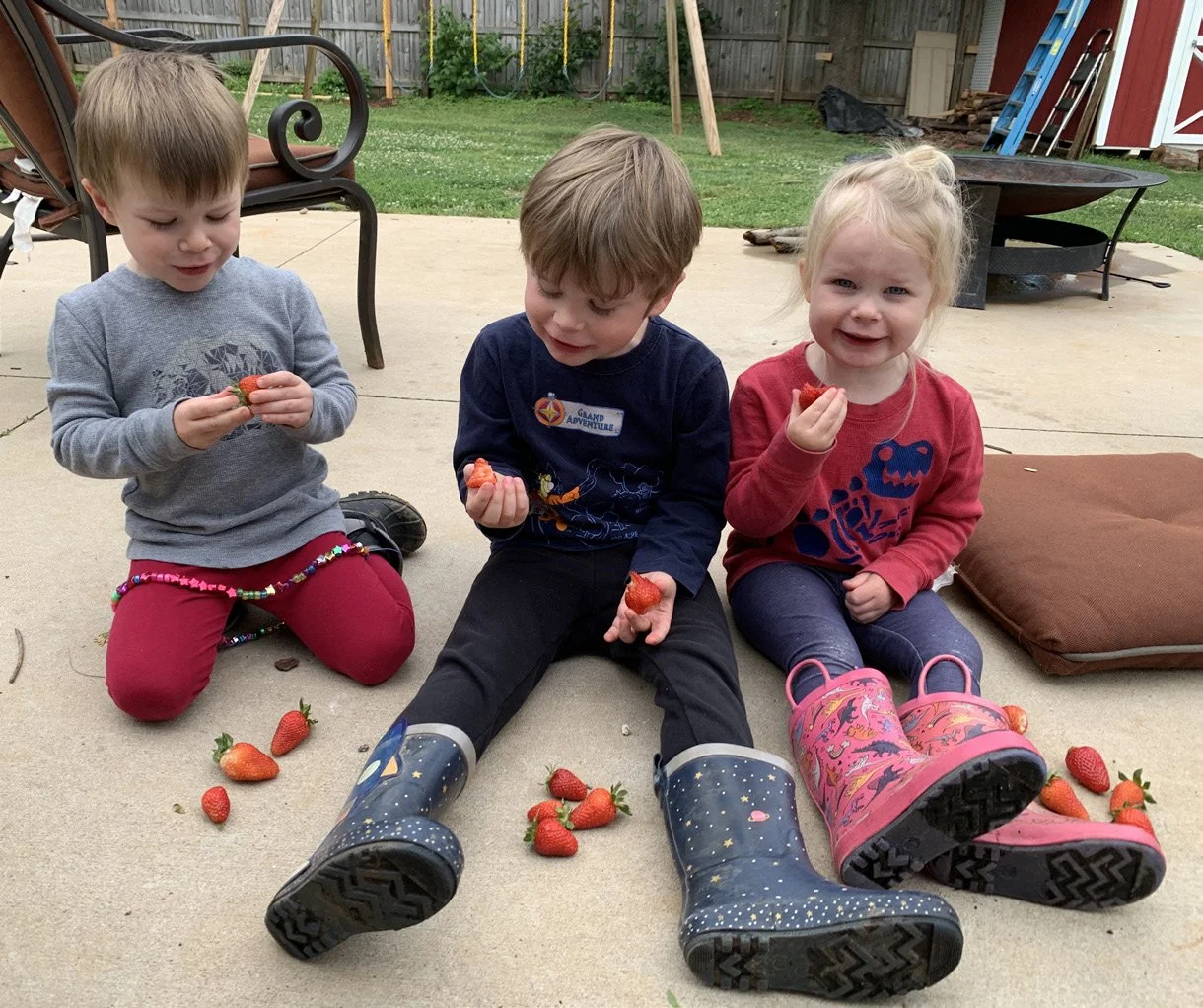Caring for the Land: Creation Care Stories
by Rev. Alan Hawkins
This is adapted from the Summer 2021 Ordinary Time issue of The Table magazine. This features both Rev. Alan’s introduction as well as the creation care stories from different members of our Redeemer congregation as they reflect on the portions of God’s creation which they are stewarding. If you’d like to see this article as it originally appeared in the magazine, you can find it here.
After their wandering and waiting, preparation and acquisition, the Israelites at last take possession of the Promised Land. They do so as different tribes, determined by the lineage of their parents. As seen in Joshua 14-21, the people are given the land to care for and to utilize for their tribe. The purpose of the land is to care for the people of the land. We were made as physical beings in a corporeal world, placed intentionally into the balance between human and all other creation: the two parts feeding, sustaining, and caring for each other in a divinely appointed rhythm. Here at New Garden Park, we care for the land we’ve been given as one family. Although we have volunteers and staff who contribute to the work, the care of this property is our responsibility. We’re the tribe that’s entered this land and our intention is to care for it theologically, ecologically, and communally.
THEOLOGICALLY
Creation care is a godly thing. Why didn’t God just fashion us into legions of disembodied angelic beings floating around relating to each other? What’s the purpose of stuff? How do you care about something theologically? To have a belief that “stuff” matters means you treat it as such. God has designed us to be physical beings in physical spaces: meaning that land and dirt and fruit and bugs actually matter. This physical world is the vehicle by which God has created a people for himself, where he will be with them and care for them from now to eternity. In this issue of The Table, we are exploring stories from the parish of folks who are embodying in their own zip codes this belief in and practice of the cultivation of space. They do this--indeed, we are doing this, together--because space and matter are gifts to us for our good. Christian theology says your spirit and body are equally important. This truth is Eucharistic. It’s why bread and wine are used in this rite. God purposed crushed wheat grains to form bread, used to symbolize who Christ is to us. Jesus doesn’t just say “think about me in your hearts,” but he asks us to remember him with our whole selves, experiencing him through external visceral elements as well as internal spiritual ones.
ECOLOGICALLY
As we cultivate this property, we are intentionally looking for ways to utilize the land that will sow back into it and bless it for generations to come. When buying this property, we had to research and test our soil because we’re close to the airport: they are only one of many neighbors to our property whose use of the land affects New Garden Park. Through our work here, we are healing this land, whose soil has been subject to years of degradation. What we do to our property, we eventually leave to our community of the future. We want to be a good neighbor to our world, leaving what we’ve been given better than we found it. Our land is affected by what is around us, and we affect what is around us. We keep this at the forefront of our mind as we plan and work in the now. For many of us, we think so shortsightedly. Having a longer horizon of vision for what God has entrusted to us makes us consider the impact of our actions (positively or negatively) for years to come. Imagine years down the road, New Garden Park bursting with material health and vibrancy not just for our tribe, but for those to come.
COMMUNALLY
Umuganda day—our twice annual community work day at the property—is the most obvious place where communal cultivation happens at New Garden Park. In the last two months, we’ve seen almost 200 people come out to help. We eat breakfast and lunch together; we work hard together to accomplish our dreams and goals for this place. What a joy it is to see people taking responsibility and building affection for this place. Everyone taking a part in caring for the land, fellowshipping together and practicing gratitude for the gift we’ve been given, increases our ownership of this land. As you will see in the personal stories from within our community, our joint work at NGP also builds or reinforces individual commitment to creation care in our homes and hearts. What we practice as a group has far-reaching effects on the individual life: our togetherness is the place where we learn, grow, and are equipped for God’s particular calling for our lives and resources.
Creation Care Stories
The Talbert Family
Before we even moved to Greensboro, we decided our acre and a quarter would be cultivated in a way that draws out beauty, provides food, and establishes order and purpose, reflecting the Divinely-intended harmony between creation and God’s gardener priests. Though we have been tempted to fell many trees, we have restricted ourselves to a few that obscure the sun’s reach to our garden, and to make space for an eventual orchard. It has been an unusual process of discernment: “You may stay,” “You are out of place and causing problems.” So, it has not been a haphazard approach to our bit of creation, but our participation in its ordering and meaningfulness.
Our “ordering”--the digging, removing, chopping, tilling, choosing, and occasional Christian swearing--has produced a vegetable and cutting flower garden in a way that harnesses the narrow window created by the removal of a few hickories, a maple, and a double-trunked white oak. I imagine the performances of our tasks match well the scene in the first Garden: the woman had the vision, planning, the seeds, and the dedication to regularly tend. The man nodded, as if to say, “It’s good,” and began the chopping, digging, irrigation, and building. It works well for us this way, and the division of labor is not so sharply delineated that we cannot be “helpers” to one another. This season has yielded a great deal of lettuce, radishes, snap peas, and the beginnings of sweet peas and snapdragons.
In this ordering process, and to atone for those felled trees, my wife has planted dozens of native, shade-growing flora, and has distributed with care--in the depths of our woods or on the fringes where they can get a larger taste of sunlight--the swamp roses placed strategically along a natural drainage gully, and winterberry as a signal of hope to stand against the brown and gray of winter when it returns: Our White Tree of Gondor…but as a red berry bush in the leaf litter.
In maintaining peace with creation, we have left many trees, and have cultivated under the eaves of one oak a rather expansive shade garden, layered with day lilies, columbine, heuchera, allium, Irish moss, peonies, and some weird purpley plant that I was intent on having, yet promptly forgot its name. We have even managed to squeeze in a few blueberry bushes, a Meyer lemon, and a thornless blackberry trellis. The bleeding hearts suffered under the feet of our children (and perhaps an unaware adult), like orcs with their axes, but their damage has decreased over the year as they have learned to appreciate the time and value of the garden… and perhaps to fear the wrath of their gardener-priest mother.
Most recently, we have added chickens to our lives and yard. This has been a process of patience, caution, and wariness. There is a reason no one says, “smart as a chicken.” So much out there endangers their lives, including themselves. As they grow, we look forward to the pay-off of eggs and outfoxing the foxes, but also the complement of creatures and foliage as their carers delight in this sacramental ordering of the land as a gesture of hope that one day the lion will lay down with the lamb and He will make all things new.
The Lewis Family
I grew up in a household where, during my childhood, there was at least some form of a garden nearly every year, and I have fond memories of "helping" my dad create and tend it. As an adult, maybe two to three times in the eight years my wife Jennifer and I owned a home in metro Atlanta (pre-kids,) we had a small garden, but that was simply "buy a few small plants from Home Depot, put them in the ground, throw out some Sevin dust and chemical fertilizer, and see what happens." At that time, I didn't think about it in terms of taking care of God's creation or participating in His wondrous food cycle; it was merely a utilitarian exercise that was kinda cool to do and yielded better-tasting tomatoes than those we could get in the grocery store. Gardening certainly wasn't part of any greater ethos to me at the time.
That all changed in the winter/spring of 2017-2018, primarily because of the influence of the Farm at New Garden Park on our family. I saw the wonder and excitement in our children's eyes when they could eat food mere moments after harvesting it. Soon, I internalized their message about stewarding the land and connecting with God's creation. I was in, but it was rather last minute. We made the decision to have a garden in early April 2018, and within a couple of weeks, everything we would plant that year was in the ground. There was little planning. Some things grew quite well; others didn't. Still others (like squash and zucchini) produced well for a month or so before being destroyed by pests that I'd never heard of prior to then (Lord, do we *really* need squash vine borers???). However, through both the successes and failures, I was thoroughly hooked after that year. Since then, I’ve gleaned wisdom from Lena and other Christian gardeners/farmers, taken numerous classes through the NC Extension Service, and have greatly expanded our gardening areas to approximately 1,500 square feet, in addition to a small walk-in greenhouse to germinate seedlings, protecting them from the elements during late winter and early spring. I’ve even learned to arrange home-grown flower bouquets for my wife and daughters!
Spring 2021 marks my fourth season as an organic gardener, and I’d like to share a recent “God moment.” Back in mid-February, Greensboro experienced two ice storms within less than a week. Our home lost power service for 36 hours during the first one, but our generator kept the heater in our small greenhouse powered. Upon entering the greenhouse at one point during the storm, I was struck by the incredible contrast between life outside the greenhouse, and that within. I snapped a few photos.
Outside was icy, barren, and death-like, but in the greenhouse, there was life, growth, and a glimpse of what was to come in spring and summer. What a picture of life in Christ, versus that outside of Him! When we “greenhouse” our souls by placing ourselves in optimal situations for growth (spending time with God in prayer, reading His Word, worshiping Him, fellowshipping with His people,) we set ourselves up to have life abundantly (John 10:10), to catch glimpses of the Glory that is to come! (Romans 8:18) and to grow and flourish (Philippians 1:6, John 15:5).
Indeed, the oft-quoted teaching of Jesus in John 15:5 captures much of what I experienced that day: “I am the vine; you are the branches. If you remain in me and I in you, you will bear much fruit; apart from me you can do nothing.” I can be a slow learner of spiritual lessons, and I tend toward being far too dependent on my own gifts and talents rather than embracing the lesson of the vine and the branches. We truly do live in a barren, broken, icy world—one where both spiritual and physical death surrounds us. But if we remain connected to Him—our soul’s greenhouse—we will bear fruit. Apart from that connection, like my plants, we can do nothing. May the Redeemer family be a people who are diligent about greenhousing our souls.
Adam Hubert & Hope Academy
As a Greensboro Fellow, I was required to spend a certain amount of hours a week volunteering. When the Fellows director said that Lena would need help starting New Garden Park Farm, I thought this would be a simple task. Little did I know that I was taking part in something that would be deeply forming. I had experience working in gardens, but I had never thought or desired to connect this to my spiritual life. I had never thought of it as something that was not only redeeming for people, but something that was restorative for all of creation. It was in the many conversations and the dreaming in 2017 about what NGP would become that I really saw the Lord beginning to connect the dots between land stewardship and justice. I appreciate Lena Van Wyk helping me to see the seeds in my life that had already been planted from folks like my grandmother, and challenging me to not be afraid to tap back into those ancestral practices. As part of my time volunteering on the land, Lena also passed along a book by the author Bell Hooks called Belonging: A Culture of Place.
As my Fellows year came to a close, I knew that I wanted to stay at my work placement Hope Academy. I had grown to really love the school and Hope Academy has some of the greatest students in the world. When I was asked to become the middle school science teacher and to focus on taking a hands-on approach, I could see the handiwork of the Lord at play. Having spent a year learning how to garden well and restore broken land, I felt equipped to use the school garden space as a place of learning.
At the time of taking over the school garden at Hope in 2018, there were four raised beds with nothing growing in them. Fast forward to now, and we have nine raised beds, two pollinator gardens, and an assortment of flowers. Getting to restore and add beauty to our neighborhood does not just strengthen the academic experience, but can also be deeply spiritual for both teacher and students. The garden has become a real touch point for the Glenwood neighborhood. From folks just enjoying the beauty of the plants, to people putting their yard scraps in our compost bin, to being able to give out produce during the pandemic.
Priya & Aquaponics
Last spring, I was gifted one 55-gallon fish tank as well as a five-tiered wire shelving unit--so, I had no more excuses for not trying my hand at aquaponics! I bought a fountain pump, some tubing, a few trays, and got to work. I now have a small 10-gallon aquaponics tank growing orchids and other houseplants and a large 55-gallon aquaponics tank growing vegetables and herbs, both set up in the sunny bedroom windows of my town home.
They are little microcosms, with fish creating the waste that feeds the plants and the plants filtering the water for the fish. It fills my bedroom with crystal clear water, bright tropical fish, overflowing aquatic plants, abundant herbs and flourishing houseplants, and a quiet waterfall noise. God has taught me just how much greater He is than us humans: He keeps the whole world with all its worries and stresses and disasters in balance, while I’m here just trying to keep a few fish in a 10-gallon tank in balance! His design is so intricate and personal, attending to individual needs but interconnecting everything into community. The invisible bacteria, the pH, each little fish, baby fish, snail, plant for shelter or food, oxygen, carbon dioxide--all are working together in give and take to maintain balance and growth. My tanks are all set up to pump on timers, so all I do is replenish the water that is lost to evaporation and plant use, and harvest the plants. I set it up in keeping with God’s design, and now get to enjoy watching as it all grows, which is yet another life lesson through aquaponics.
The Weber Family
Three and a half years ago, God provided a home that fit all eight of us, in addition to an acre of land. This was the first home we bought, so we immediately started dreaming like crazy about all the things we could do on an acre. We longed to create a haven where our kids could safely explore God’s creation and where others could enjoy God’s gifts with us.
The first year, we focused on starting a garden, planting a few fruit trees, and of course having a baby! The second year, we expanded the garden and began the fight with pests. Since we live on the edge of town, we have every pest you can imagine: deer, rabbits, skunks, foxes, and lots of bugs that were all thrilled by our garden. (Well, the foxes waited until we had chickens.) Last year, as everything started to shut down due to the pandemic, we decided to majorly expand the garden and get some chickens. Since we eat about six dozen eggs a week, we decided to start with 25 hens. A few months later, we got a rabbit from Redeemer’s rabbitry, which quickly turned to five rabbits, then to 19 rabbits, now to 27 rabbits…you get the picture. This year, while we have been growing our rabbitry, we have also been busy replacing the 11 hens that the foxes enjoyed over the winter. We got 12 replacement hens and added four ducklings to go with them.
What about all those kids we have? They have been right beside us all the way. Even though our oldest is out of the house now, he still comes over to help us from time to time. The kids have helped to plant the garden, pull weeds, spread dirt, harvest veggies, and preserve them for winter. Now that we have animals, it is their job to feed them every day. One of our goals has been to teach our children the valuable tools of caring for our land and watching it provide for us. They have been busy learning how life works, the good and the bad: The joy of new baby animals and the pain of losing one of their beloved pets. They have also learned that to raise animals requires responsibility and a lot of hard work. But this doesn’t stop them from asking for more: “When can we get a goat?” “Can we get more land so we can get a horse?” “Do you think we could put a cow on an acre?” (Confession: Cherie asked the last one; Ben was happy with the ducks.) At least half of the kids have decided that they want to be farmers when they grow up.
The pandemic interrupted our plans to invite others into our haven this past year. This spring, we had some of the youth from our East African congregation work with us on our land to raise money for Camp Booyah. Watching their joy as they dug in the dirt and planted seeds made our dream, started over three years ago, a reality. As our lives return to “normal,” we are looking forward to inviting others onto our acre to enjoy this little piece of God’s creation.
The Wall Family
Six years ago our family moved from Houston TX to Greensboro NC. Before we moved, Leah and I sat down and made a list of the things we wanted in a new house. We wanted our home to be a place of connection and nourishment, and spent a lot of time talking about our desire to find an older home in an urban setting that was within walking distance to downtown. We wanted a house small enough that we'd have to bump into each other and learn to be at peace with that, but also a big yard. Having container gardened in the past, we hoped to be able to establish an in-ground garden to help cut costs on produce throughout the year. Through God’s provision, we landed on the corner of Fairmont Street in the historic Westerwood neighborhood in downtown Greensboro. Here, we began a new chapter in our family's life. While our new house was not our first choice, we know it was what God intended for us. And it checked all of our boxes. Sort of. When we moved into our home, you could barely see the house from either street side. The land for a garden was there, but you couldn't really see it. The large magnolia tree in the front yard had been neglected for years and had grown almost up to the front entrance of the house. In addition, almost the entire yard--front, sides, and back--was overgrown with decades of English ivy, cedar and pine trees, and holly bushes reaching their branches to the heavens high over the power lines, not to mention a small forest of untamed vines and a host of other things growing wild and free down one side of our house. Our yard was a huge neglected mess and the house had suffered the effects.
One morning, Leah and I walked out onto our wobbly, dilapidated deck (we built a new one during the pandemic; woohoo!) with our coffee in hand and began to vision cast for the gift God had provided for us. I remember her saying clearly, “I'd like a small garden and think it would fit nice over there” (pointing to the most neglected 1/8 acre of our property). After exchanging a few ideas and writing a very long “honey do” list of things that needed resurrecting, we went our separate ways to go about our day.
Over the course of the next few weeks and months, whenever our schedules allowed, we exorcised the demonic out of the yard. We pulled and pulled and pulled and pulled ivy and then mowed and sprayed ivy (with an organic spray of course). No more ivy! Praise God. Then we cut down bushes and trees, and then dug up and burned a lot of stumps. No more tangled pine forest! Praise God.
After we cleared the land, we decided to erect our garden using the no-dig raised bed method where we built 8 raised beds that totaled 500+ square feet of garden space. We dedicated the middle of the garden to a welcoming meeting space with a fire pit and lights with the hope of inviting neighbors into this space of nourishment and flourishing. For the next four years, our garden produced a lot of produce and we have had many memorable evenings gathered around the fire. We invited neighbors at Halloween and in the spring for a garden tour. We’ve met there with new classes of fellows. We’ve sat with our own family on quiet nights.
Our youngest, Cassian, took his first steps in a little patch of grass out there. We have so enjoyed the gift of the land--a place to work and rest and play--picking raspberries and tomatoes. We sit on a swing in the magnolia tree all the time now.
When the pandemic hit we, like many people, decided it was time to plant more food with the intent of becoming more self-sufficient as a family, not only for ourselves but also for others. We had been utilizing every square inch of our garden, but we made a mammoth decision to convert almost the entirety of our yard (front, sides, and the other half of our backyard) into a food forest. Along with our two existing peach trees, we planted four more, in addition to two plum trees, a persimmon tree, two pear trees, a nectarine tree, two fig trees, two apple trees, a pomegranate tree, a beaked hazelnut tree, two sea berry bushes, two goumi bushes, 14 blueberry bushes, two nanking cherry bushes, three sour cherry bushes, two yogi berry bushes, multiple blackberry and raspberry vines, some grape vines, sun choke (google it; it’s quite tasty), and an insane amount of strawberry plants interwoven throughout our property; all of which is growing AMAZINGLY.
Recently, we disposed of all the raised garden beds (they were rotting) and redesigned the garden. We decided to follow the berm and swale on contour garden method based on the Farm at New Garden Park. In addition, we transformed a large portion of our front yard into a fruit tree guild where we are currently growing 25+ herbs and beneficial plants for the fruit trees, bushes, and wildlife (butterflies and bees). We realized that many of the difficulties that we had with our raised bed garden were the result of trying to get only what we wanted from the land. As friends joined us to dig and prepare the new garden, we knew that now there would be a closer partnership between our work and the natural way of things. We have already seen the fruit of that collaboration. We have also been gracious recipients of the kindness of our church family in sharing wisdom, resources, plants and physical labor.
The Lord has blessed the land through the work of our hands.
What began as a small raised bed garden (Leah will correct me and say it was a rather large raised bed garden) has transformed into a 1/4 acre food forest. There are plans for every square inch of our property to produce food, beneficial plants or herbs and we are well on our way to achieving that goal.
Our little urban food forest also draws us further into the cycles of liturgical living through the tradition of Rogation Days and closer observance of natural seasons that are echoed in the liturgical year, from feast to feast. The garden invites us to work and pray. It invites us to a life of greater awareness. Not a day goes by where a neighbor or people just driving by don't stop and ask about what’s going on around our property. The land God has gifted us with has gifted others through conversations as well as its harvest. We’ve had more organic conversations about what God is up to in our lives through the gift of this land and the produce it provides than ever before. And the cool thing is that in almost every instance, these conversations are not ones we have had to start. God has and continues to use our small 1/4 acre of property to cultivate relationships and conversations about what is good, noble, and true with our neighbors, friends, family, and strangers.
But this is not the end of the story.
Once we figure out how to keep the squirrels from stealing our peaches, our plan is to build a small greenhouse out of antique windows (fyi: we will take your old wooden windows), raise quail eggs and meat (YUMMY), and then begin the process of transforming the rest of our front yard into a perennial native wildflower haven.
Follow our food forest adventure on Instagram!
Gia’s Roses
When I set out to build a rose garden, I thought the premise was pretty straightforward: dig hole, add amendments, plant rose bush, add water, done. This premise is not totally wrong, just incomplete, especially when you want to grow them organically. What I have learned in this process is that they actually require another component: community.
Rose bushes need a community to flourish. They love to make friends with alliums, and they grow even stronger with more plant friends, like calamint or catmint, salvia, and sweet alyssum. A current theory among botanists is that a diverse plant community in a garden confuses plant predators (like Japanese beetles or aphids), because these insects must land on one plant multiple times in order to get a strong sense of which plant it is and whether they would like to eat it. If an insect keeps landing on a variety of plants that live in close connection with each other, then it has a much more difficult time deciding whether it wants to eat it or not.
It is not hard for me to draw a connection between this aspect of God’s design for plant life and his design for human life. At different points in my life, I have been given various prescriptions for how to live the Christian life: go to church, add a quiet time, tithe, and pray in the morning, before meals, and before bed. These are all such great things, but when lived without Christian community, they are not enough to help us flourish.
The Fissel Family
What we affectionately refer to as “Fissel Farms” currently consists of 10 chickens, 7 raised beds, two berry patches and a developing English-style flower garden. I’m slightly terrified of chickens and as a family, we’re not wildly adventurous in eating vegetables. So, why do we do the weeding and digging, composting and planting, watering and harvesting? It’s a mystery to my own self sometimes, but I think the answer to the question might be wonder.
Looking back, I see that the beginnings of our first garden came after I fell in love with Barbara Kingsolver’s book Animal, Vegetable, Miracle. Soon after that experience, I had started exclusively shopping at the farmer’s market, buying local meat, eggs, and milk for the first time in my life, and eating what vegetables were seasonal. I bought grains and spices in bulk. I started using essential oils. Kingsolver’s book put me in touch with the wonder of our natural world and the joy and responsibility of preserving that wonder so that in some small way, I might reclaim it from the hands of those who systematically manipulate, engineer, and attempt to control and monetize it. Because of this shift, Mikey decided to build me garden boxes. He erroneously thought he would handle the initial grunt work and leave me to it. He had no way of knowing how quickly he would fall in love with the work of gardening, and how much the boxes were for him as much as for me.
We had our first child in the midst of growing that garden, and watching him toddle out to the strawberry patch to wait for me to hunt down strawberries that he would devour whole, or gingerly step up to the chicken coop to offer long blades of grass to “the girls,” only solidified our desire to keep the momentum going. Since then, our family has grown to five with the addition of our twins, and watching the kids experience and enjoy the wonder of the natural world is ever more a potent motivator to continue gardening. Their curiosity and awe at the most simple things happening within our little plot of land leads me into reverence, awareness, and worship. And this wealth is at our fingertips in every moment that we have eyes and ears to behold it.
I don’t have to look far to offer an example of what I mean. Just this morning (May 26), the kids and I rushed outside after breakfast to beat the heat of the day and accomplish some garden tending. That morning after letting the chickens into the run, Mikey had pulled our first radish, and he suggested there might be more ready to harvest. The kids had never harvested radishes before and excitement was high. We made a beeline for the row of floppy radish greens and indeed, colorful little heads were peeking above the soil. Everyone had the pleasure of tugging one or two into the light, little voices gasping at the oddly shaped treasures that had been hiding only moments before beneath the earth (as Mikey reminds me, it is not only the children who experience this thrill). From there, we moved onto the (now familiar) task of combing through our strawberry patch. The two or three seedlings we planted the year before had outgrown their box and cast out hundreds of shoots like fishing lines, commandeering a much larger adjacent box for their eager expansion. This green colony is bursting with fruit at the moment and almost daily, we fill whatever is on hand--buckets, shirts, hats, but mostly bellies. The strawberries are in the boxes right next to our fenced-in chicken run and when we hit a rotten or bug-eaten strawberry, we toss it over the fence to the chickens. Squatting in the dirt, engaged in this process, my oldest and I discussed the fact that nothing in our garden (and indeed, in nature) goes to waste: we eat the good strawberries and the bad ones get eaten by the chickens, who are nourished by them before pooping out the remains, which will make it into our compost bins and eventually added back into our soil to produce more fruit for our bodies. “Isn’t God’s design amazing?” I ask, myself enraptured by the thought of it. “Nothing is wasted,” Jon Luke agrees.
What our garden gives us is much more than food for our bodies. It was a great joy during the pandemic to luxuriate in the bounty of our garden--strawberries in the early summer, more watermelon and cherry tomatoes than we could eat in mid to late summer, and an overabundance of romaine lettuce in the early fall. We harvested pumpkins, roasting the seeds and pureeing the rest into pies and smoothies. We tried our first cabbage, which turned into a meal that no one but mom would eat. We preciously combed through our young blackberry and raspberry bushes, cherishing the few early fruits of our labor, sometimes splitting one berry between two mouths. COVID untethered us from all sorts of reliable moorings in our lives, but we became quite literally grounded to the place we found ourselves with our toes and fingers in the dirt, our bodies filled with nourishment and pleasure by the tastes and textures that grew outside our back door.
This year, we were able to finally use the compost we have been cultivating for two years. It is enriching our 2021 garden and sending up new volunteer plants every day. It’s hard to weed them out sometimes--their audacity makes me want to offer them a fighting chance, though we can’t possibly accommodate them all. Even in the act of weeding out these resilient plants, I find a meditation of hope and wonder--these seeds were tossed aside. They were not cultivated, cared for, or watered by me. Despite my ignorance or neglect, and even from the deepest and longest darkness, common grace feeds and cares for them and so life persists.
The wonder of it all is all I can offer as an explanation for the incorrigible gardeners we have become. It draws us back to the labor of the dirt, and compels us to wonder bigger each year. It is a beautiful, forgiving joy. Even when we get lazy and fruit rots on the vine, they get tossed into the compost and we see them next year- -hundreds of little tomatoes trying again. When things go awry (read: squash bugs and crows), it’s a reminder of how much is out of our control and that this is a good thing. We may not control the birds of the air, but the resilience of nature is also not our responsibility. We have the calling and the pleasure of showing up to our lives each day, but also the comfort of endless grace when we fall from the tightrope we walk. Like volunteers from the compost bin, we are supported by common grace: this wonder, and many awaiting discovery, is what draws us again and again to the garden.

